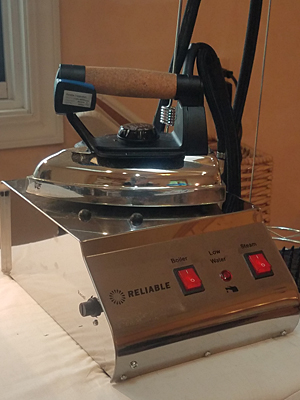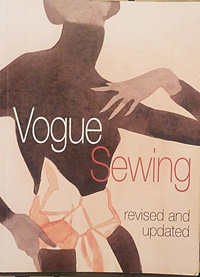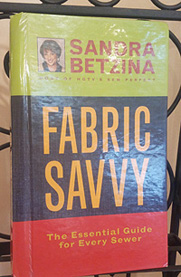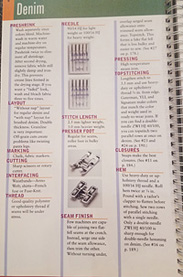The Two Most Important Pieces of Equipment in the Sewing Room
This week, let's look at the two most important pieces of equipment in the sewing room: the sewing machine and the iron. Both are essential to producing a professional finish for your creations.
Volumes have been written about the sewing machine, and personal brand loyalties are strong. Embarking on a shopping trip for a machine can be overwhelming. The advent of electronics and digitizing have changed the face of today's machines, but under all that glamor the functional bones are the same as in our grandmother's day.
I'll start by ruling out industrial equipment. Unless you are planning on launching a production run of crafts or clothing, you won't need a machine that's designed for a factory. Most of us who work independently have the advantage of pacing ourselves and focusing on a quality outcome. We aren't driven by the demands of production sewing. A good home sewing machine should meet several criteria:
- A strong motor
- At least five utility stitches
- A good buttonholer
- An accessible and easy to use zipper foot
- The option for both straight and stretch stitches
Ask your self what kind of sewing you want to do. An embroidery machine with a long arm and many programmed patterns isn't appropriate for the person who is interested in making clothing. And most importantly, a computerized machine is not necessarily better than a mechanical one. Most of the professional seamstresses I know use the venerable Pfaff1222E, an all metal, mechanical machine from 1979. My beloved 1222E has served me for decades. I will never part with it.

All the major manufacturers of sewing machines offer a range of products, from entry level to sophisticated. Purchasing a machine from a dealer often comes with service and trade-in options. I rank the current brands this way for quality. Naturally, the top brands are more costly.
- Bernina ~ still the best for craftsmanship and performance
- Pfaff ~ a close second because some of its parts are now made offshore
- Husqvarna ~ offers a wide range of machines
- Janome
- Brother
- Necchi
Almost all machines today are portable. The cabinet with fold-out workspace is a thing of the past. After market extension tables can be purchased that do a good stand-in job for the cabinet surface.
As with your handtools, purchase the best you can afford. Dealerships offer trade-up options when you're ready for the next level. Most importantly, remember that no amount of accessories on a machine can take the place of good foundational sewing skills.
You can eliminate most service on your machine by simply observina a few basic maintenance practices:
- Read your manual! Lots of important information there. Replacement manuals can be found online.
- Remove lint. It traps moisture and causes corrosion. Use a lint brush to clean around the feed dogs, under the throat plate and around the sewing shuttle. Remove the bobbin case and brush out lint occasionally.
- Check your manual for oiling directions. There are very specific places to do this. Use only sewing machine oil.
- An annual checkup at a reputable dealer can address motor or electrical problems.
The iron is almost as important as the sewing machine in shaping, pressing and finishing a project. In my studio, I use a professional iron that enables me to work continuously without having to stop to refill it. It has a powerful steam jet and accommodates groups of students nicely.

You won't need an iron of that capability. A good home steam iron with a metal soleplate should handle most fabrics. Be sure to use an all-cotton ironing board cover to avoid scorching. There are several pieces of pressing equipment that are used along with the iron for shaping. I'll introduce you to them later. Keep the soleplate of your iron clean with products appropriate for that job. Dritz makes one that's readily available.
One more important tool you'll need is a good basic sewing book. I use one published by Vogue , but most of the major pattern companies offer something similar.

|

|

|
Also, look into these stellar and respected authors: Sandra Betzina, Sarah Veblen and Alexandra Morgan. Websites can be tricky. Texas A&M and MSU textile programs both have excellent websites.
There are also some wonderful sewing magazines that offer tutorials and inspiration. Threads magazine, SewStylish Vogue Patterns magazine are just a few. Sandra Betzina's Fabric Savvy is a must for any sewer. It covers just about everything you need to know about working with most fabrics.
I hope you find this week's post helpful in learning more about the sewing machine . As always, email with any questions.